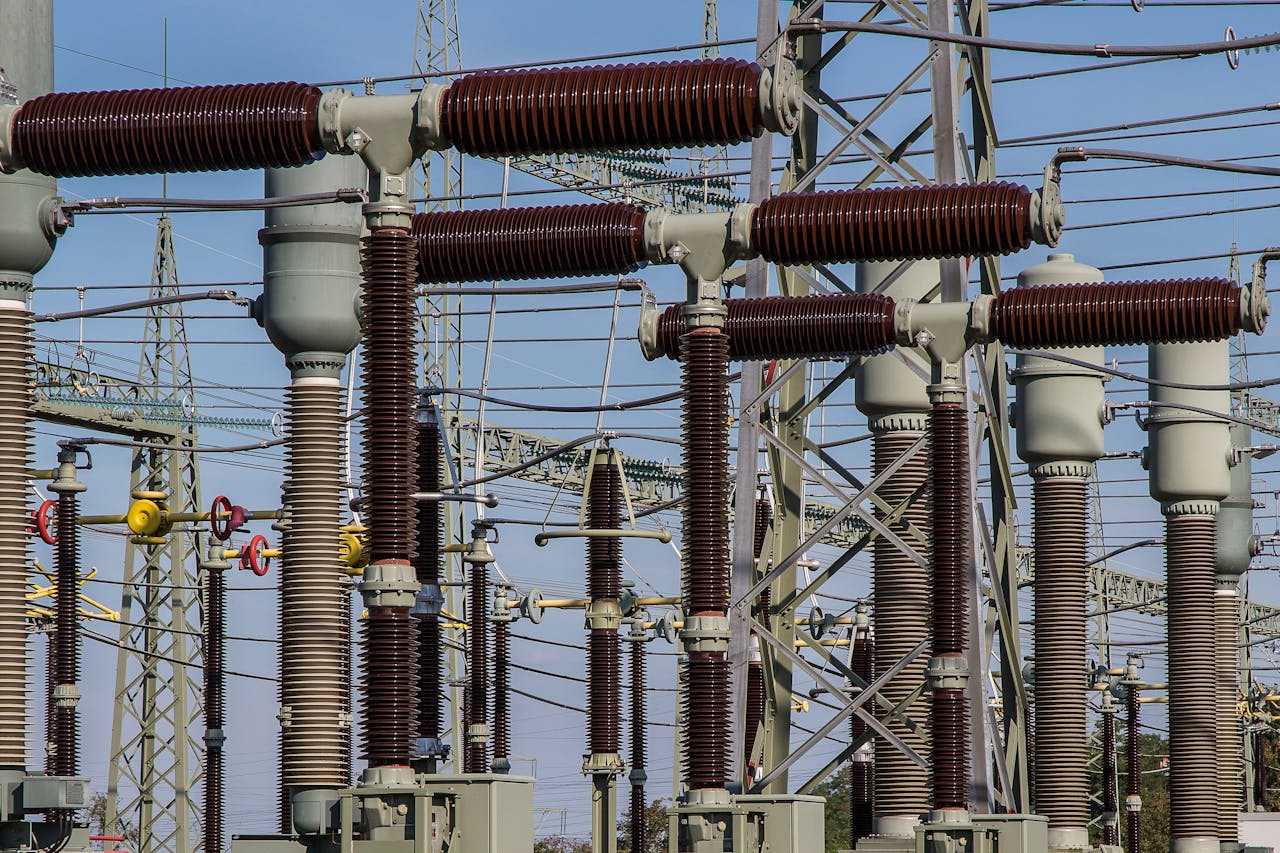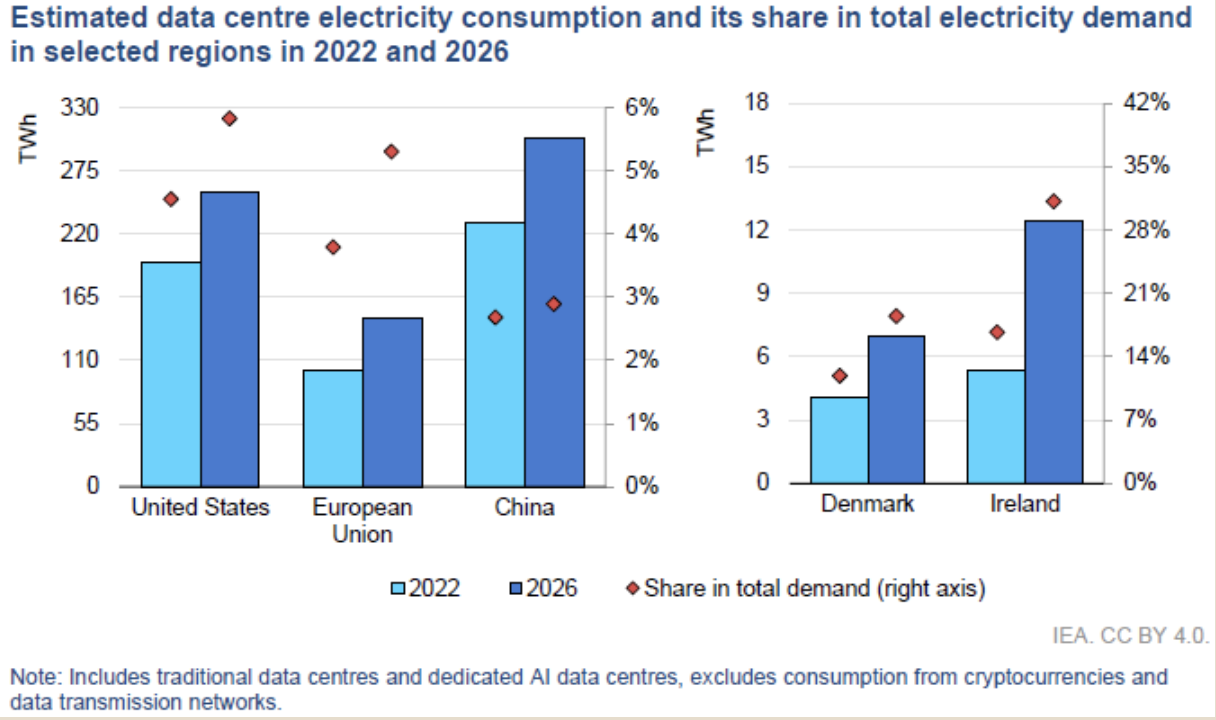Comments
- No comments found

There was a time when the electricity for running server farms was an afterthought, but in many places, that time is already past.
The International Energy Agency has a discussion of the issue in its recent report, Electricity 2024: Analysis and forecast to 2026 (January 2024, pp. 31-36).
The light blue and dark blue bars show the rise in electricity from 2022 to 2026 needed for server farms for the US, EU, and China, together with Denmark and Ireland. The expected rise is substantial. But focus instead on the orange diamonds, which show the share of total electricity for the country or region as a whole. For the US and the EU, server farms are projected to be 5-6% of total electricity consumption by 2026. For Denmark, the projection for 2026 is about 20% of total electricity consumption; for Ireland, it’s 32%.

Ireland’s situation is unique: it has both a welcoming business climate for foreign investment and a geographically advantageous position between the US and EU economies. But its experience also illustrates that data centers tend to be concentrated in a few locations, often locations of tech firms, financial centers, and government. For the US, the IEA report notes:
In the United States, the largest data centre hubs are located in California, Texas and Virginia. In the case of Virginia, their economy was dominated in 2021 by the data centre sector expansion, attracting 62% of all of the state’s new investments and providing more than 5 000 new jobs. Northern Virginia is the largest data centre market in the country, collecting USD 1 billion in local tax revenues per year, with growth trending higher as companies, such as Amazon’s planned USD 35 billion expansion by 2040, continue to increase their investment in the state.
Of course, there are potential innovations with some promise for holding down the increase in this level of electricity use–but the fundamental drivers behind the rising demand for data servers seem likely to keep rising. Here’s one vivid example from the IEA report:
Market trends, including the fast incorporation of AI into software programming across a variety of sectors, increase the overall electricity demand of data centres. Search tools like Google could see a tenfold increase of their electricity demand in the case of fully implementing AI in it. When comparing the average electricity demand of a typical Google search (0.3 Wh of electricity) to OpenAI’s ChatGPT (2.9 Wh per request), and considering 9 billion searches daily, this would require almost 10 TWh of additional electricity in a year.
Providing the additional electricity for data centers will be a challenge, but my guess is that, when it comes to the everyday problems of business and government as well as the big-picture problems of national and global policy-making, additional data-processing capacity is a (relatively) cheap investment.
Timothy Taylor is an American economist. He is managing editor of the Journal of Economic Perspectives, a quarterly academic journal produced at Macalester College and published by the American Economic Association. Taylor received his Bachelor of Arts degree from Haverford College and a master's degree in economics from Stanford University. At Stanford, he was winner of the award for excellent teaching in a large class (more than 30 students) given by the Associated Students of Stanford University. At Minnesota, he was named a Distinguished Lecturer by the Department of Economics and voted Teacher of the Year by the master's degree students at the Hubert H. Humphrey Institute of Public Affairs. Taylor has been a guest speaker for groups of teachers of high school economics, visiting diplomats from eastern Europe, talk-radio shows, and community groups. From 1989 to 1997, Professor Taylor wrote an economics opinion column for the San Jose Mercury-News. He has published multiple lectures on economics through The Teaching Company. With Rudolph Penner and Isabel Sawhill, he is co-author of Updating America's Social Contract (2000), whose first chapter provided an early radical centrist perspective, "An Agenda for the Radical Middle". Taylor is also the author of The Instant Economist: Everything You Need to Know About How the Economy Works, published by the Penguin Group in 2012. The fourth edition of Taylor's Principles of Economics textbook was published by Textbook Media in 2017.
Leave your comments
Post comment as a guest